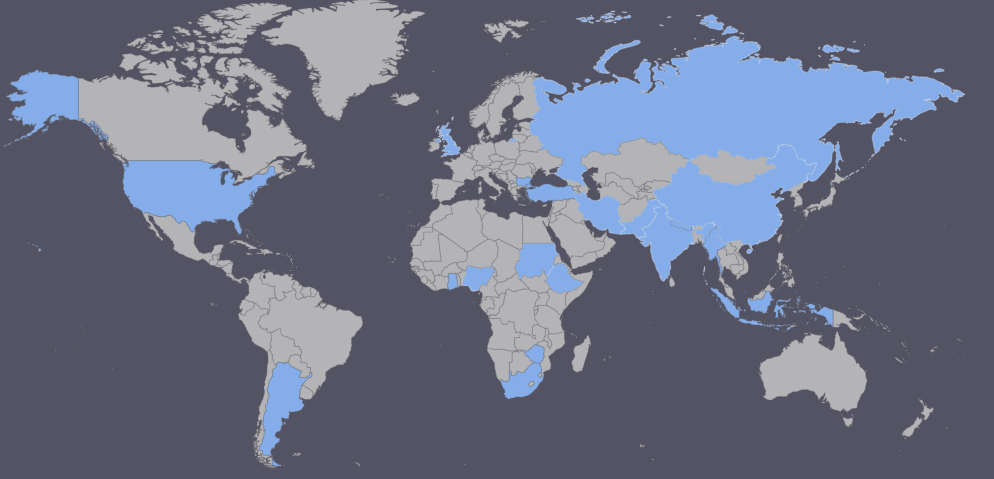Maximizing Estimated Ultimate Recovery from Unconventional Gas Reservoirs: A Decline Curve Analysis Approach
Keywords:
Estimation of Ultimate Recovery , Hydraulic fracturing, Decline curve analysis, Unconventional, GasAbstract
This research investigates the application of decline curve analysis to estimate ultimate recovery and production life of unconventional gas wells. By analyzing production data from 14 wells, including both primary and refractured wells, we aim to quantify the impact of hydraulic fracturing on well performance and reservoir productivity. The study employs the Arps decline curve model to characterize production trends and predict future production rates. The results demonstrate that refractured wells exhibit significantly higher recovery factors compared to primary wells. This finding underscores the importance of hydraulic fracturing as a stimulation technique to enhance production from unconventional gas reservoirs. The insights gained from this study can aid in optimizing field development strategies, maximizing economic returns, and mitigating production decline.
References
Alagoz, E., Guo, Y., Li, L., 2023. Optimization of Fracture Treatment Design in a Vertical Well. Petroleum and Petrochemical Engineering Journal 7 (4), 000371. https://doi.org/10.23880/ppej-16000371.
Alagoz, E., Dundar, E.C., 2024. Forecasting Gas Well Production and Analyzing Pressure Dynamics: A Study of Transient Flow and Pressure Drop in Natural Gas Formation. Journal of Energy & Environmental Science 2 (1), 000115. https://doi.org/10.23880/jeesc-16000115.
Alagoz, E., Dundar E.C., 2023. A Comparative Analysis of Production Forecast for Vertical Gas Wells: Fractured vs. Non-Fractured. International Journal of Earth Sciences Knowledge and Applications 5 (3) 333-337. https://www.ijeska.com/index.php/ijeska/article/view/403.
Alagoz, E., Dundar, E.C., Al Krmagi, M., 2024a. Numerical Simulator of Production Forecast for Multi-Lateral Oil Well using MATLAB-based Simulator. Progresses in Petrochemical Science, Crimson Publishers. 6 (4). PPS. 000643. https://doi.org/10.31031/PPS.2024.06.000643. https://crimsonpublishers.com/pps/pdf/PPS.000643.pdf.
Alagoz, E., Dundar, E.C., Al Krmagi, M., 2024b. Numerical Simulation of a Multilateral Saturated Reservoir using MATLAB-based Simulator. Petroleum and Petrochemical Engineering Journal, Medwin Publishers.
Al Krmagi, M., 2024. Environmental Impacts and Treatment Technologies in Hydraulic Fracturing Water Management. International Journal of Earth Science Knowledge and Applications 6 (2), 262-267. https://www.ijeska.com/index.php/ijeska/article/view/410.
Arps, J.J., 1945. Analysis of Decline Curves. Transactions of the AIME, 160 (1), 228-247.
Dehdouh, A., Bettir, N., Khalifa, H., Kareb, A., Al Krmagi, M., 2024. Optimizing Recovery in Unconventional Reservoirs by Advancing Fishbone Drilling Technology in the Bakken Formation, Williston Basin. Paper presented at the 58th U.S. Rock Mechanics/Geomechanics Symposium, Golden, Colorado, USA, June 2024. https://doi.org/10.56952/ARMA-2024-0919.
Houghton, A., Chan, A., Liu, S., 2020. Advances in Decline Curve Analysis for Reservoir Management. Journal of Petroleum Science & Engineering, 189, 106006.
Jacobs, T., 2014. Renewing Mature Shale Wells Through Refracturing. Journal of Petroleum Technology 66 (04), 52-60. https://doi.org/10.2118/0414-0052-JPT.
Laalam, A., Khalifa, H., Ouadi, H., Benabid, M. K., Tomomewo, O. S., Al Krmagi, M., 2024. Evaluation of empirical correlations and time series models for the prediction and forecast of unconventional wells production in Wolfcamp A formation. Paper presented at the SPE/AAPG/SEG Unconventional Resources Technology Conference, Houston, Texas, USA. https://doi.org/10.15530/urtec-2024-4043738.
Li, Q., Dong, M., Wang, Y., 2021. A Comparative Study on Decline Curve Analysis Models for Gas Reservoirs. Journal of Natural Gas Science and Engineering 90, 103908.
US Energy Information Administration, 2024. Short-term Energy Outlook, November, 2024 Bulletin. https://www.eia.gov/outlooks/steo/images/Fig43.png.
Downloads
Published
Issue
Section
License
Copyright (c) 2024 Julanda Al Lawati

This work is licensed under a Creative Commons Attribution-NonCommercial-NoDerivatives 4.0 International License.
The authors keep the copyrights of the published materials with them, but the authors are aggee to give an exclusive license to the publisher that transfers all publishing and commercial exploitation rights to the publisher. The puslisher then shares the content published in this journal under CC BY-NC-ND license.



